Lakshmi Narayan
Narayan is a passionate content writer with over 4 years of experience. He loves turning complex topics into clear, engaging blog posts that are both informative and easy to read. Specializing in SEO-friendly content, he aims to keep readers up-to-date with the latest trends and practical tips in IT rentals.

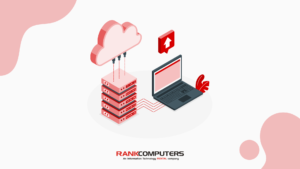
How Cloud Rentals Contribute to Sustainable Computing
August 4, 2023
No Comments
In an era where climate change is a pressing concern, every industry must play its part in reducing its carbon footprint and becoming more sustainable. The tech industry, in particular, should take this seriously. Data centres alone account for approximately 2% of global carbon emissions, equivalent to the aviation industry. One significant step towards sustainability could simply be changing the habit of owning individual centres to renting and sharing cloud centres instead. Doing so reduces the number of data centres in operation, which in turn helps companies reduce emissions and contribute significantly to a greener future. Cloud Computing: Efficient Resource Utilisation Cloud computing has revolutionised the IT landscape, offering a scalable and flexible solution to businesses. When you choose cloud rental services, you embrace a more sustainable approach to sustainable computing. Unlike traditional on-premises data centres which often run at a fraction of their capacity, cloud providers optimise their data centres for maximum efficiency. Through resource sharing among multiple users, cloud platforms can achieve a higher utilisation rate, leading to reduced energy consumption and lower carbon emissions. Opting for cloud services through rentals not only benefits the environment but also makes financial sense for companies. By eliminating the need to build and maintain on-premises data centres, cloud computing significantly reduces upfront capital expenditures. In 2018, Coverdell shifted some of its services to Microsoft’s Azure Cloud Platform, which enabled the company to cut down on monthly hosting and maintenance costs. Pay-Per-Use Model: Reduced Energy Waste One of the most significant advantages of cloud services is the pay-per-use billing model, which aligns costs with actual resource consumption. Instead of owning and maintaining a large data centre that consumes power regardless of the workload, cloud users only pay for the resources they actually use. This model allows businesses to avoid overprovisioning and minimise energy waste and expenses. A study by the Lawrence Berkeley National Laboratory estimated that cloud computing could reduce energy consumption by up to 87% for certain workloads compared to traditional in-house data centres. With the ability to scale resources up or down based on demand, companies also enjoy the flexibility to control their spending effectively and enable sustainable computing. Virtualization: Consolidating the Hardware Footprint Virtualization is a core concept in cloud computing, where multiple virtual machines (VMs) run on a single physical server. This consolidation of hardware significantly reduces the overall hardware footprint, leading to fewer servers and less electronic waste over time. According to estimates, server virtualization can reduce the number of physical servers by 80% or more, resulting in substantial energy and resource savings. This reduction also translates into tangible cost savings for businesses, as fewer physical servers means lower hardware and maintenance expenses. Moreover, virtualization simplifies IT management, saving time and labour costs associated with handling individual physical servers. The streamlined infrastructure results in improved performance and reliability, positively impacting customer experiences. According to a study by IDC, IT departments that adopt server virtualization achieve as much as a 40% reduction in both hardware and software costs. Multi-Tenant Environments: Shared Efficiency Cloud platforms operate on multi-tenant architectures, meaning that multiple customers rent and share the same infrastructure and resources. This shared environment fosters efficiency since the infrastructure is optimised for a diverse range of workloads and demands. As a result, cloud providers can achieve economies of scale and deliver sustainable computing services. Offsetting Carbon Footprint through Green Cloud Providers Several cloud service providers have taken proactive steps to reduce their environmental impact. Some companies have committed to achieving 100% renewable energy usage for their data centers. By choosing to rent cloud services from such cloud providers, businesses can effectively offset their own carbon footprint and promote sustainable computing. Further, they gain a competitive edge by appealing to environmentally-conscious customers who appreciate such initiatives. Strategic partnerships with green cloud providers can bolster a company’s reputation and foster customer loyalty, ultimately contributing to the overall success of the business.
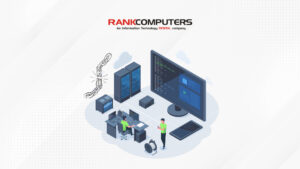
Breaking the Upgrade Cycle: How IT Rentals Help You Save on Constant Refreshes
April 26, 2024
No Comments
The rapid pace of technological advancements often leads to a never-ending upgrade cycle, putting a strain on budgets and IT resources. However, there's an effective solution.
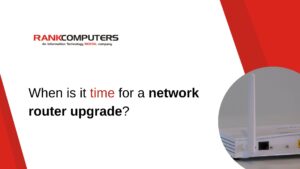
When is it time for a network router upgrade?
February 11, 2023
No Comments
Do you remember the last time you upgraded the network router for your business? If you don’t, it’s a sign that you probably need to get an updated network router for your organization. As your business becomes more and more reliant on technology, it becomes highly necessary to keep your IT equipment up-to-date. Failing to do that can lead to data loss, cyberattacks, a decrease in productivity and other service-related issues. You wouldn’t want that, would you? One of the most prominent, and essential IT devices, is the network router. The network router takes care of data transfer over your company’s network. An outdated router can significantly slow down your data transfer process, and might also leave your network vulnerable to cyber attacks. If you own a small business, it is likely that you have budgetary restraints. In such a case, you might have overlooked the need for a router upgrade. However, we have listed a few scenarios that might help you understand when it is time to change your network router. When is your network router due for an upgrade? Generally, the shelf life of network routers is approximately 5 years. Even still, in some cases, if the device is used and taken care of appropriately, it might work for longer. Here are a few instances where you might want to consider upgrading your business’s network router – Inadequate speed of data transfer Although there are a lot of reasons behind decreased data transfer speed, an outdated network router can be one of the contributing factors. Routers deteriorate slowly, over time. If your router’s performance is not up to the mark, or if it keeps getting slower over time, you might want to consider an upgrade. Overheating In the case of IT devices, overheating is never a good sign. Your network router must have the capability to handle heavy workloads, and it is normal for the router to heat up when it is being used for a prolonged period of time. However, if it becomes too hot to touch, it is definitely time to swap it for a better model. An important point to note here is that overheating can be caused by other factors as well, such as poor ventilation. If you have placed your network router in a confined space, it might cause the router to overheat. With time, it is very likely that the router might break down. Recurring connection issues A network router’s job is extremely important and is limited. It is supposed to facilitate your connections and data transfers across a network. If your router is failing to perform its task efficiently, you need a new router. Again, there are various factors that contribute to bad connectivity. If all the parameters of connectivity seem apt, yet you’re facing connection issues, it is a router problem. Changes in requirements There might come a time in your company’s timeline when you might consider expanding or switching to a different IT infrastructure. In such a scenario, you may need updated network routers to support your new technological requirements. How can you upgrade your routers easily? If you’ve faced any of the aforementioned situations, and you’re considering getting an upgrade, you might want to consider rental routers. It is an efficient and cost-effective solution for your business. Although the shelf-life of a network router is five years, it might break down earlier than expected, or might require maintenance at some point. Rental routers make it easy for you to get an upgrade, or call for support service at any point. Besides, if you choose to rent from trusted IT rental providers like Rank Computers, you can rest assured that the upgradation process of your equipment will be smooth and easy. With Rank Computers, you can be certain about receiving high-quality rental routers. Even if you choose to scale your business, we can provide the best network routers to suit your needs.
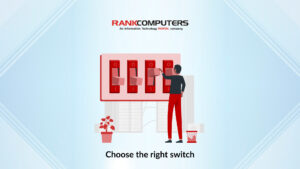
Switching up your network: How to choose the right switch for your network needs
April 27, 2023
No Comments
As businesses continue to grow, so do their networking needs. Switches are a critical component of any network infrastructure and play a vital role in connecting devices, facilitating communication, and ensuring data transfer. With the vast array of switches available, selecting the right one for your specific networking needs can be a daunting task. In this blog, we’ll help you choose the right switch for your network. Determine the size and complexity of your network Before selecting a switch, it is essential to determine the size and complexity of your network. Consider the number of devices that need to be connected and the bandwidth requirements. A small network with only a few devices may only require a basic unmanaged switch, while a larger network with more complex requirements may need a managed switch with advanced configuration options. Understand the different types of switches available There are three main types of switches available: unmanaged switches, managed switches, and smart switches. Consider the number and speed of ports When choosing a network switch, it’s important to consider the number and speed of ports required. The number of ports needed will depend on the number of devices on the network, while the speed of the ports will depend on the bandwidth requirements of the devices. Switches come with different port speeds, ranging from Fast Ethernet to Gigabit Ethernet to 10 Gigabit Ethernet, and the number and speed of uplink ports should also be taken into account. Properly considering the number and speed of ports will ensure that the switches can handle the network’s bandwidth requirements and provide adequate connectivity. Check for PoE support PoE (Power over Ethernet) support is an important factor to consider when choosing a network switch. PoE allows devices such as wireless access points, IP cameras, and VoIP phones to receive power and data over a single Ethernet cable, which simplifies installation and reduces costs. It’s important to check the specifications of the switch to see if it supports PoE, and to determine the required power for the devices being used. Additionally, it’s worth checking if the switch supports PoE pass-through, which allows PoE switches to supply power to other switches that don’t have PoE support. Look for advanced features When choosing a network switch, it’s important to consider advanced features that can help optimize network performance, enhance security, and provide greater flexibility and control. Some advanced features include VLANs, QoS, link aggregation, SNMP, port mirroring, Layer 3 routing, and multicast support. These features can help you to segment your network, prioritize traffic, increase bandwidth, remotely manage devices, troubleshoot issues, and more efficiently distribute data to multiple recipients. Choosing a switch with the right advanced features can greatly impact the functionality and performance of your network. Consider your budget Budget consideration is an important factor when choosing a network switch. The cost of a switch can vary widely depending on the size, complexity, and advanced features it offers. It’s important to consider not only the upfront cost of the switch but also any ongoing maintenance or upgrade costs. It may be tough to buy a switch as it is expensive so in order to save money, you can opt for rental services as it is cost efficient. Choose a reputable vendor If you are choosing to rent switches for your network, it’s important to choose a reputable vendor. Look for a vendor that has a proven track record of delivering high-quality equipment and providing excellent customer service. In this instance, Rank Computers has got you covered. With Rank Computers, you can rent high-quality switches for your network without the hassle of maintenance and installation while saving you money. Conclusion In conclusion, choosing the right switch is crucial for optimizing network performance, scalability, and security. IT professionals must carefully assess their network needs, consider the number and speed of ports, look for advanced features, check for PoE support, and keep budget considerations in mind. By making an informed decision, IT professionals can ensure that their network infrastructure is well-equipped to handle current and future demands and meets the needs of their organization.
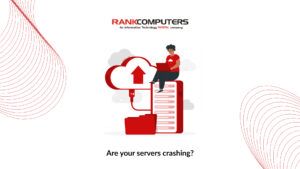
How to choose the best storage device for your company?
November 3, 2022
No Comments
Introduction For any company or organization, its most valuable asset is the data. Whether it is customer-sensitive information or employee records, this data must be secured, and industries need to strictly comply with data privacy laws. Using data storage methods properly will prevent hackers from gaining access to your information, and will also help in reassuring your clients that you value their privacy. Data storage devices are used to store information, temporarily or permanently. These storage devices can be thought of as drawers in a closet. When you want to access the contents of the drawers, you simply go to your closet, reach out to the relevant drawer, and retrieve the item. Similarly, the data storage devices hold the information in a structured manner, so that it is easy to access the data whenever needed. Types of Storage devices Storage devices are of different types, each having distinct attributes. It is necessary for you to know the types of data storage devices, and compare their features before you select one for your company. Let us take a look at these types – Direct Attached Storage (DAS) This is the simplest type of storage device – DAS is directly attached to the main system. DAS devices can comprise multiple hard drives without any network connectivity. It is easy to set up, configure, and access DAS solutions. Internal Direct Attached Storage is usually pre-installed in systems, and external storage can be plugged-in via a USB port. Since DAS is connected directly to the system, it can provide high-speed access to data, and it supports the high-performance operation. As it does not need network connectivity to function, the DAS system is not affected by network issues. Network Attached Storage (NAS) NAS is the most popular storage solution, for individuals and organizations. This is a file-level data storage solution that stores data over a network. NAS devices can connect multiple PCs and servers simultaneously without compromising their performance capabilities. NAS has scalable storage facilities – storage can be increased by adding another NAS device or hard drive with greater capacity. It also has a centralized storage system that allows different devices on the same network to share data with each other – irrespective of the type of device or operating system. NAS devices have increased performance too, as they are connected to the Local Area Network (LAN) and can retrieve and store files easily. Storage Area Network (SAN) SAN is a high-performance storage solution that provides block-level storage access to host devices. This storage solution allows users to store data as a separate device, which is accessible via a network. SAN is efficient, as it provides the performance of a DAS, with the flexibility of NAS. SAN can be accessed via multiple paths and it is independent of the applications it supports. If a communication failure occurs, SAN can use an alternate path to maintain storage availability, ensuring that there are no problems between the host and storage device. Apart from that, SAN is scalable and can be configured according to evolving business needs. New hosts and storage devices can be added to increase the capacity of SAN with ease. Which is the best storage device? Each storage device has its own pros and cons. The best storage solution for your organization is the one that best fulfills your requirements. Eventually, the solution you choose will depend upon factors such as – budget, amount of storage capacity needed, backup options, performance, etc. The DAS system does not require any hardware or software to maintain it, and hence it has a low cost. It is a practical and cost-effective data storage solution for a small or medium-sized business, where you might not have room to expand your budget. DAS is easy to maintain and does not require special IT support services. It can easily be set up on individual computers. NAS is used commonly in companies of all sizes and for personal systems, file storage and sharing. It is predominantly used for storing large volumes of unstructured data, such as video surveillance files, and supports collaboration. Multiple file servers can be combined into one NAS device which saves space and promotes easy management. SAN is predominantly used in database management systems, as it has high input-output processing speeds, and low latency. Since the features of SAN are also desirable for virtualized environments, it makes SAN a good option for high-traffic e-commerce websites and workplaces that require the processing of large amounts of data. Even though SAN and NAS solutions provide higher storage capacity and increased performance, if you are a small business and have a limited budget, DAS is the best option for you. Conclusion Before you choose a storage device for your company, it is better to do your research and answer a few vital questions, like: Even if you answer all these questions beforehand, there is a very high possibility that these factors might change as your company or business grows. To avoid unnecessary expenditure, it is best to rent storage devices from trusted IT rental providers like Rank Computers. They provide SAN, NAS, and DAS solutions manufactured by the best brands at an economic rate. This will make it easier for you to switch your storage devices as your requirements change.
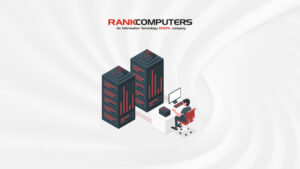
Cost-Effective IT Infrastructure: How to Build a Lean and Efficient System
July 22, 2023
No Comments
As technology evolves, the devices you have at the moment may become outdated in the near future or even break down. Implement a strong system to monitor the lifecycle of your devices, including their efficiency and performance.
